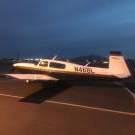EDM-900 Installation
-
Members Online
- AdamJD
- JeffPug
- McMooney
- Robert Hicks
- dkkim73
- Kelpro999
- kortopates
- Smiles201
- KSMooniac
- Marc_B
- bowfishnn
- hubcap
- 231MJ
- Ragsf15e
- bluehighwayflyer
- 802flyer
- Pierre07
- SkyBound
- EricJ
- Vance Harral
- hphillips
- Red Leader
- N201MKTurbo
- IFLYIFR
- eman1200
- Nukemzzz
- Rotorhead
- JB2000
- good2eat
- Delta
- RescueMunchkin
- Andy95W
- RobotsBoston
- cliffy
- PeterB
- Glen Davis
- Will.iam
- theoriginalturk


Recommended Posts
Join the conversation
You can post now and register later. If you have an account, sign in now to post with your account.